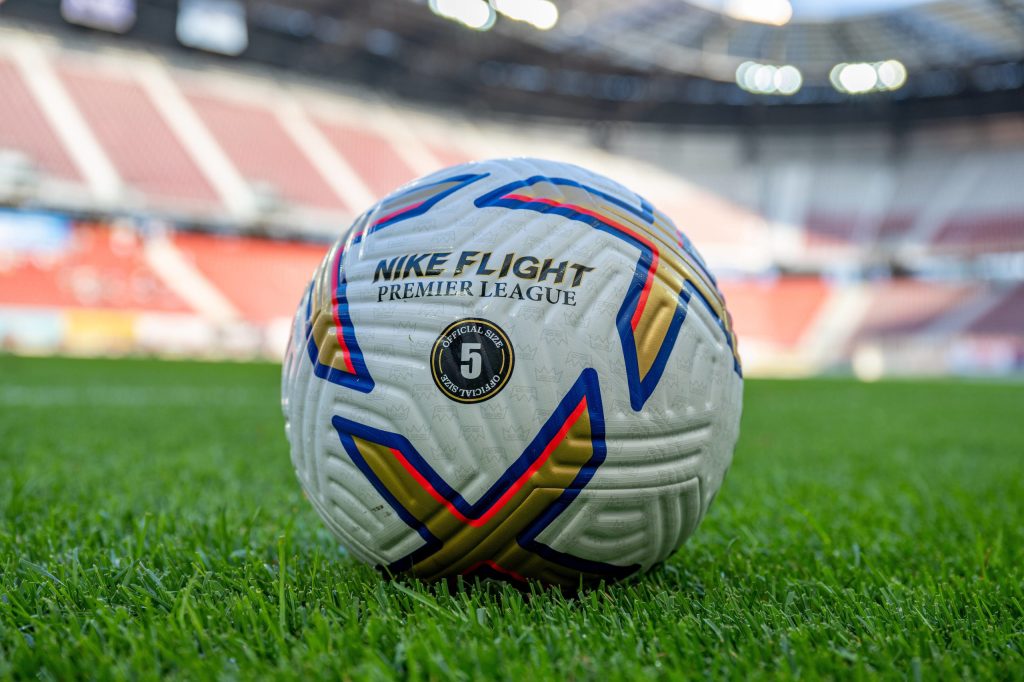When West Ham United signed Sead Hakšabanović in the summer of 2017, much was expected. He came to the EPL from Halmstads for a fee of £3m with a reputation as a ‘wonderkid’. Unfortunately for him, it was a nightmare move. He didn’t make a single league appearance for the East London club and after a failed loan to Malaga in La Liga, returned to Allsvenskan in 2019, initially on loan.
Norrköping made his loan a permanent deal just before the start of the new season and he has repaid them with 1 goal and 2 assists in the opening 3 games.
This tactical analysis, in the form of a scout report, will assess what his strengths bring to Norrköping’s tactics as well as suggest an area for improvement.
In possession
In the early stages of this new season, Norrköping have established themselves as a passing team. They have favoured a patient approach, passing out from the back and waiting for gaps to appear in the opposition lines. They tend to lineup in a 4-3-3 formation with Hakšabanović on the left-wing.
The Montenegrin is their primary attacking weapon and he has a lot of creative freedom in the side. He tends to hover between holding a wide position on the left and drifting inside to the half-space when looking to receive the ball. Subsequently, although they like to hold the ball, if his teammates think they can find him early, they will do so.
Once he has received it, the first thing he looks to do is dribble directly towards the goal or into a central area. Standing at only 1.74m (5’9”), his low centre of gravity, close control and quick feet make him an excellent dribbler.
In the 2019 season, he averaged 7.07 per 90. This season he has 12.02 so far, but this is a very small sample size and is skewed by him attempting 14 dribbles in the first match back. 46 of his last 120 dribbles in the final third lead to a shot, 4 of those being goals. More on his shooting later, but this shows what his preference is whenever he receives the ball.
In this example, Rasmus Lauritsen fizzed a pass into the Montenegrin’s feet. Aware of the Kalmar fullback coming, Hakšabanović span him with an excellent first touch and set off towards the Kalmar goal.
With two more Kalmar defenders coming over to cover, a quick change of feet allowed him to race into the centre, where he had to be fouled to stop him going through on goal.
His excellent technical ability and quick feet, coupled with good acceleration, make him a nightmare for defenders when he dribbles. As above, his awareness of his opponent’s positioning and ability to take the ball under control very quickly are also key to his dribbling ability.
Whenever you watch Norrköping, expect them to get the ball to Hakšabanović in areas like this as much as possible and expect him to make something happen when they do so.
The other thing that stands out about Hakšabanović is where he creates chances from. As mentioned, when he dribbles, he tends to come inside. This subsequently means he either plays a pass behind the defence for an overlapping fullback or for Christoffer Nyman to run onto and shoot. It’s very rare to see him go down the outside of the opposition fullback and cross.
The image above displays all the chances he has created since joining Norrköping on loan in 2019. Note that he when he first moved back to Sweden he was deployed as a right-sided central midfielder, which accounts for the majority of the chances created from the right.
As you can see, the chances from the left are largely created from the half-space. These can be inswinging crosses with his favoured right foot, but they tend to be from passes on the floor.
In the example above, he again carried the ball inside from the left touchline. The right fullback, Ian Smith, was in space with a clear run at goal if he could be found. Hakšabanović attempted to thread the ball through but didn’t quite weight it correctly and it was taken by the goalkeeper. However, this showed the dangerous situations he can create by playing passes from this position.
It’s not that uncommon to see him get passes like this wrong though, as they have to be threaded through the eye of a needle. He operates in a high-risk/high-reward manner in these positions.
This time he gets the reward.
Here we see him in a similar position but facing up against a defence not quite set up yet.
He carried the ball forwards, with all the defenders back-pedalling. As mentioned earlier, he had an overlapping runner outside him, which he was ready to release the ball to at the right moment.
Just as he drew one of the defenders towards him, he played the ball between the two remaining defenders in retreat. This allowed a shot on goal that had to be well saved.
We can get a sense of how often he makes passes like this with the graphic below, which depicts deep-completions (passes made to within a 20m radius of the goal) from the 2019 Allsvenskan season. He was one of the division’s top performers in this metric.
These two preferred moves, dribbling inside and playing passes from the half-space show that Hakšabanović is not a traditional winger. He interprets his role as one of an inside-forward or a wide playmaker. It’s notable that he didn’t rank in the top 20 for expected assists in 2019, but this is likely to be because he primarily plays the pass for one of his teammates to create a chance, or because he shoots more often than most. Again, more on that part later.
Out of possession
One thing that surprises about Hakšabanović is that he does far more work defensively than you would expect from a flair player like him. He ranked in the 87th percentile for attacking midfielders last season when it came to defensive duels per 90.
He also holds his position in the Norrköping defensive structure with discipline.
Above, observe him in position on the left of the Norrköping midfield. Their defensive structure was actually a 4-5-1, although they had briefly shifted to a 4-4-2 whilst one of the other midfielders went to press the ball. As they did that, he joined the rest of his midfielder teammates in compressing into a solid bank of four.
He was not passive though, as when the ball was passed backwards, he ran out to press the open passing option and Kalmar turned over the ball under pressure.
He’s not particularly physical in defensive duels as he has more of a slight build, but he works hard, which can cover for some of that. Norrköping are certainly not carrying him in terms of defensive output, which can be the case with a player of his style.
Transition to attack
When Norrköping are transitioning to the attacking phase, Hakšabanović’s dribbling is even more of a weapon than it is in facing a set defence. He tends to try to pick the ball up in more central areas if possible in transition and commit opponents in the middle of the pitch. This allows him the shortest path towards the goal, which is where he heads with a one-track mind.
Observe in the image above how many accelerations and dribbles are featured. In transition situations, Hakšabanović can be in on goal or able to set up a teammate after beating only one or two players, as opposed to when running towards a crowded penalty area, as he often is.
Above is one of the examples. He had just won the ball on the edge of his own defensive third. As he did so, he was immediately pressed by two AIK players. He nutmegged former Sunderland player Sebastian Larsson before slipping through the middle of him and Ebenzer Ofori. He accelerated up to top speed very quickly and neither player could get near him.
He was then able to play a through ball into the channel for Nyman to chase.
This particular attack didn’t lead to anything, but it showed how Hakšabanović’s quick feet and pace could expose the opposition extremely quickly in the transitional phase.
Transition to defence
Hakšabanović’s keenness to press has already been mentioned, but it’s most important in defensive transition. He has made 72 ball recoveries through counter-pressing. He looks to win the ball high up the field if he can and stop the opponent transition before it has started.
Observe in the image above how many attempts he has made to win the ball back in the opposition half. In fact, 33 of his 72 ball recoveries made through counter-pressing have come in the final third of the pitch.
Here we see the aftermath of a Norrköping attack which has broken down. Hakšabanović was keen to win the ball back as soon as possible and charged forwards to press. This meant he was able to cut out the attempted pass. It led to a throw-in, rather than him winning the ball in a dangerous area, but it could have meant that he was able to get in for a chance on goal.
In the example here we see him chasing back, rather than pressing forwards. Copenhagen had just won the ball back and Jens Stage looked to pass to Pep Biel. Hakšabanović spotted the danger and raced back to make the interception.
He was then able to turn and run directly towards the Copenhagen goal, as he loves to do.
Along with this, he is fit enough to keep running like this all game. He doesn’t stop chasing back later on in games.
Room for improvement
The main area for improvement in Hakšabanović’s game is decision making. He has a tendency to be selfish and take silly shots on when he could play a pass to a teammate in a better position.
Here, he had two options available to him. Nyman was making a run across him, which would have been an admittedly difficult pass to play on the reverse, but if he had pulled it off it would have been a one v one with the goalkeeper.
The easier option was Jonathan Levi, who was arriving on the edge of the box and he could have played a ball into his path which would have been a clear-cut opportunity.
Instead, he took the shot on himself. It rolled harmlessly wide and the good chance was gone, to the frustration of his teammates.
This time, he had the ball much further out. He had options to keep the ball moving and patiently build pressure until a space opened up. Both fullbacks were in space if he could have found them. Instead he tried to shoot, with 9 opposition players between himself and the goal. He knew it would have to be a wonder strike to make it through that amount of players, so he hit it as hard as possible and it sailed over the bar.
His shot map since joining Norrköping in 2019 tells the story clearly. There is a huge cluster of very low-value shots taken from the inside-left channel. These shots have pulled his xG per shot down to a measly 0.07. There’s no way to describe this other than wasteful.
However, it should be said that he actually has overperformed his xG, scoring 7 from 4.435xG, with 4 from outside the box. His ball-striking technique is very good and he generates a lot of power on his shots. This makes the goalkeeper work harder than many would do, considering the shot locations. It still begs the question though: How many could have been passes for a better opportunity for his team to score? I would suggest a lot of them.
Conclusion
Despite the obvious area for improvement, this analysis has shown that Hakšabanović was one of the best attacking players in Allsvenskan in 2019. He has started this new season ready to prove himself as the best player in the league.
If he can maintain the form he’s in now over the rest of the season, West Ham might feel they made a mistake by letting him go. Perhaps they would have been better served loaning him into the Championship so he could get used to English football. Whatever happens, don’t be surprised to see him back in a top 5 European League in the future.

























